Sliding Door Alternatives: Which is Best?
Table of Contents
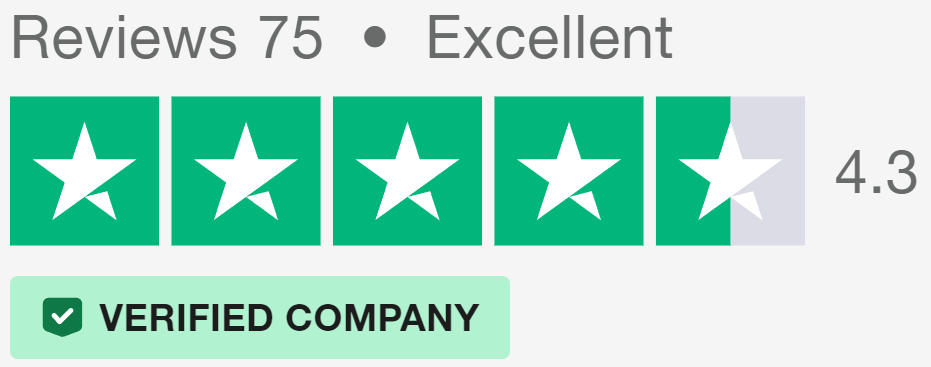
Introduction to Sliding Doors
Sliding doors have become a staple in many British homes, offering a smooth way to connect the inside of a home to the patio or garden. These doors consist of large glass panels that glide along tracks, allowing for easy opening and closing without swinging outwards or inwards.
Sliding Door Mechanism
The principle behind sliding doors is simple yet effective. Two or more panels of glass sit within a frame, with at least one panel able to move horizontally along a track. This design allows for a wide opening without taking up valuable floor space inside or outside the home.
Typically, sliding doors feature rollers at the bottom of each movable panel. These rollers sit in a track, enabling the door to slide open and closed with minimal effort. The top of the door is usually guided by a separate track, ensuring smooth movement and preventing the door from falling out of alignment.
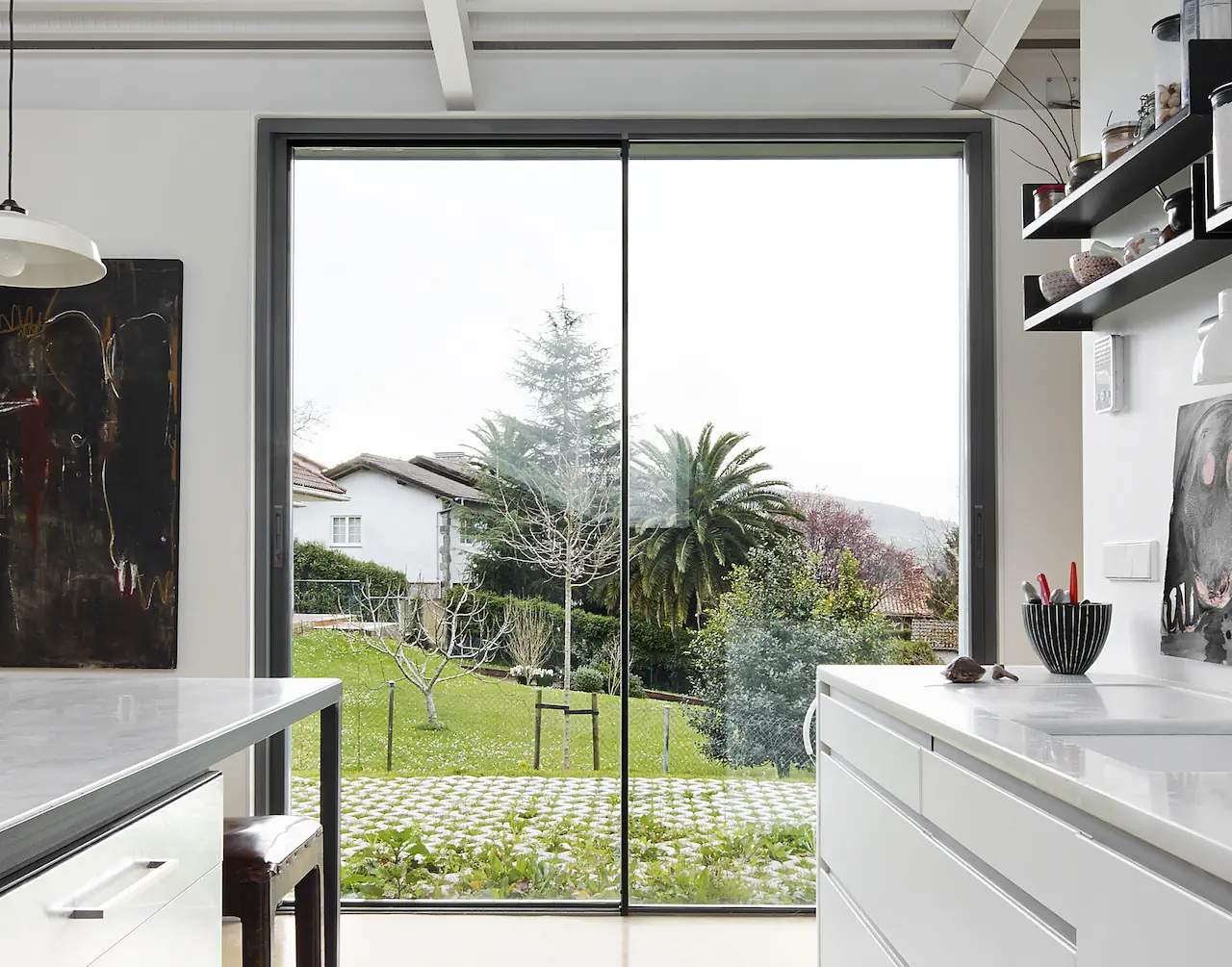
Advantages of Sliding Doors
One of the main benefits of sliding doors is their ability to create a wide opening with minimal effort. This feature makes them particularly useful for connecting living areas to patios or gardens, allowing for easy movement.
Sliding doors also excel at letting in natural light. Their large glass panels can flood a room with sunlight, making spaces feel brighter and more open.
Another advantage is their space-saving design. Unlike hinged or swing doors that require clearance to swing open, sliding doors simply glide along their track. This makes sliding glass doors an excellent choice for rooms where space is at a premium, such as small living rooms or bedrooms.
Disadvantages of Sliding Doors
Despite their popularity, sliding doors aren’t without drawbacks. One common issue is their limited opening capacity. Even when fully open, sliding doors typically only allow access to half of the total door width, as one panel must overlap the other.
Maintenance can also be a challenge with sliding doors. The tracks that allow for smooth operation can accumulate dirt and debris over time, potentially leading to sticking or jamming. Regular cleaning and maintenance are necessary to keep sliding doors functioning properly.
Security Concerns
Security is another potential downside of sliding doors. The large glass panels can be vulnerable to break-ins, and the locking mechanisms on some types of patio doors may not be as robust as those on traditional hinged doors. However, modern sliding doors often come with improved security features to address these concerns.
While sliding doors have their place in many homes, they’re not always the ideal solution. That’s why it’s worth exploring sliding door alternatives, which we’ll cover in the following sections. Each alternative offers its own set of advantages and potential drawbacks, allowing homeowners to find the best fit for their specific needs and preferences.
Bifold Doors as Sliding Door Alternatives
Bifold doors, also known as concertina doors, combine style with practicality, and consist of multiple panels that fold together like an accordion when opened, creating a wide and unobstructed entrance. Bi-fold doors remain one of the most popular sliding door alternatives.
How Bifold Doors Work
The unique design of bifold doors allows them to open fully, unlike traditional sliding doors. Each panel is connected by hinges, forming a concertina-like structure. When pushed to one side, the panels stack neatly against each other, leaving the entire doorway clear.
Bifold doors run on a track system, typically installed at the top of the frame. This track guides the doors’ movement, ensuring smooth operation. Some designs also include a bottom track for added stability, though many modern bifold doors are bottom track-free, removing potential trip hazards.
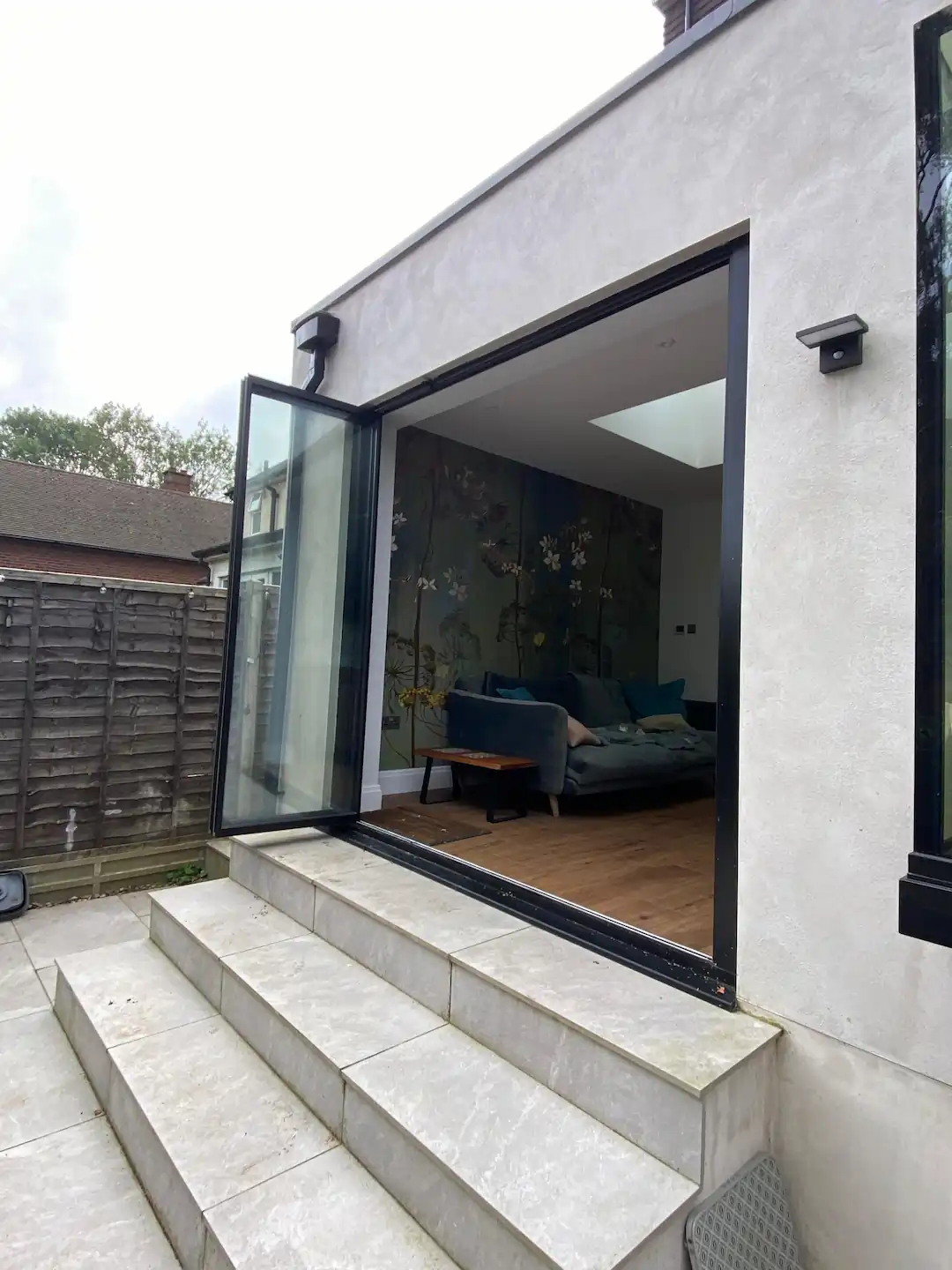
Benefits of Bifold Doors
One of the main advantages of bifold doors is their ability to open up a space completely. When fully opened, large bifold doors are perfect for summer gatherings or enjoying garden views and fresh air year-round.
Bifold doors also offer flexibility in terms of opening options. Depending on the design, you can open just one panel for quick access or fold back all panels for maximum opening. This flexibility makes bifold glass doors a practical choice for various situations and weather conditions.
Another benefit is their space-saving nature. Unlike swing doors that require clearance to open, bifold doors fold back against themselves, making them an excellent choice for areas where space is limited. This feature of bifold doors makes them a smart alternative to sliding doors in many home layouts.
Drawbacks of Bifold Doors
While bifold glass doors offer many benefits, they’re not without their drawbacks. The multiple panels and hinges can make them more complex than other door types, potentially leading to higher maintenance requirements. Regular lubrication of hinges and tracks is often necessary to keep bifold doors operating smoothly.
Cost can also be a factor to think about, as bifold doors are often more expensive than some other sliding door alternatives such as French doors due to their large and intricate design. However, many homeowners find the added expense worthwhile for the improved aesthetics and functionality.
Best Uses for Bifold Doors
Bifold doors shine in spaces where a wide opening is desired. Bifold kitchen doors are great for connecting open-plan living areas to patios or gardens, creating an expansive feel during warmer months. In colder weather, their good insulation properties help maintain a comfortable indoor temperature.
From sleek, modern aluminium frames to classic wooden designs, bifold doors can be tailored to complement various architectural styles. Some homeowners opt for a mix of solid panels and glass panels, allowing for privacy while still letting in natural light.
Bifold doors also work well as room dividers within a home too. They can separate a large space into smaller, more intimate areas when closed, while allowing for an open-plan feel when opened. This flexibility makes them a valuable tool for adapting your living space to different needs and occasions.
In essence, bifold doors offer a compelling alternative to sliding doors, providing a unique combination of style, functionality, and adaptability. Their ability to create wide openings and save space makes them an attractive option for many homeowners looking to improve their living spaces.
Slide and Turn Doors
Slide and turn doors, also known as slide and swing doors or slide and pivot doors, offer a unique approach among sliding door alternatives. These innovative systems combine the best aspects of sliding and pivot patio doors, providing flexibility and style in equal measure.
Slide and Turn Door Mechanics
Each panel slides along a track, much like a traditional sliding door. However, once the panel reaches the end of the track, it can pivot 90 degrees, allowing it to be stacked perpendicular to the doorway.
This clever mechanism allows for a full opening of the doorway, surpassing the limitations of standard sliding doors. When fully opened, slide and turn doors create a clear, unobstructed passage between spaces, making them an excellent choice for those seeking alternatives to sliding doors that offer maximum accessibility.
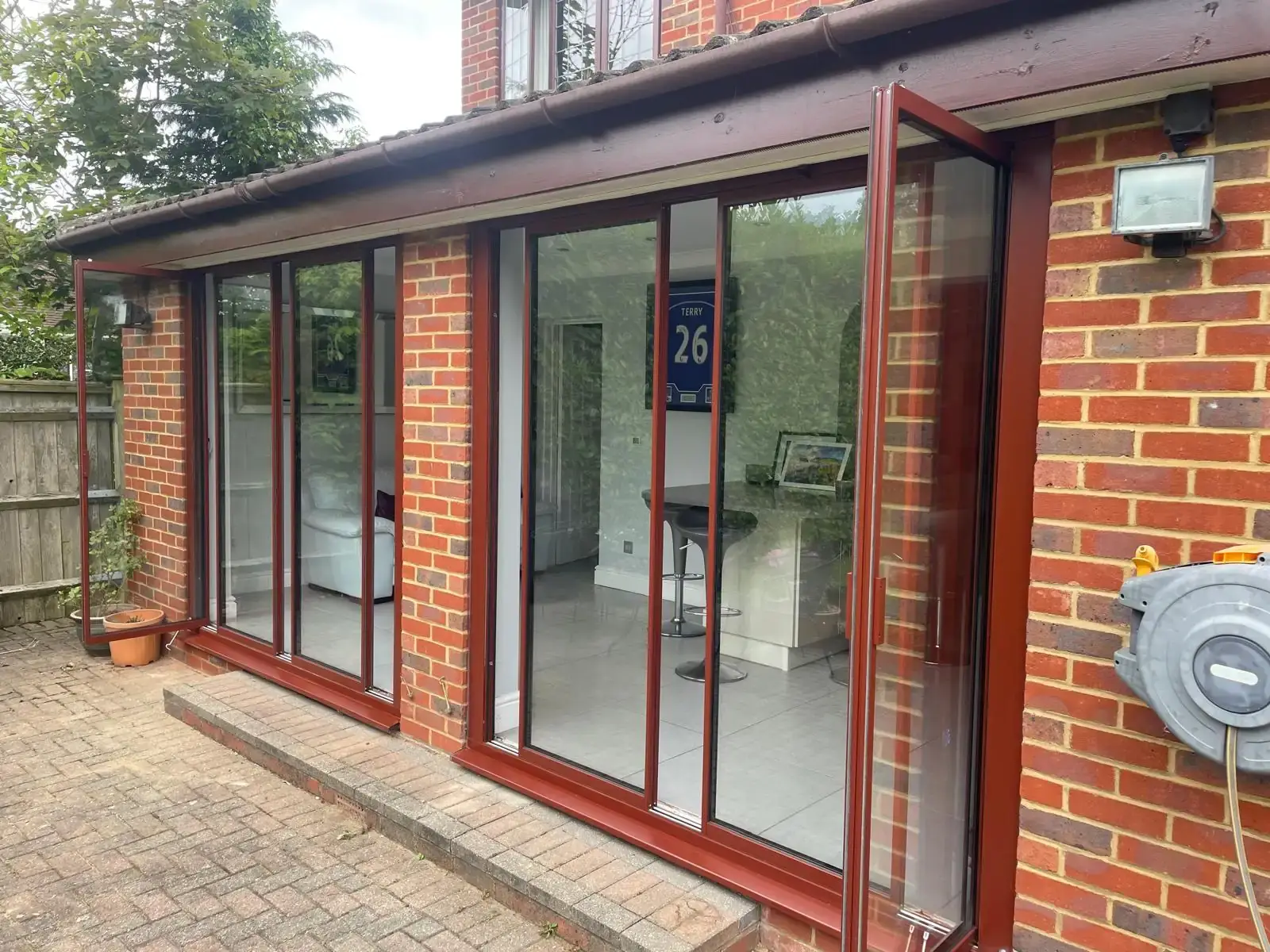
Advantages of Slide & Turn Doors
One of the primary benefits of slide and turn doors is their ability to open up a space entirely. Unlike traditional sliding doors that always leave one panel in place, slide and turn systems can clear the entire opening. This feature makes them particularly useful as patio doors, allowing for unrestricted access to outdoor areas.
Slide and turn doors also excel in terms of flexibility. Depending on the weather or your needs, you can open just one panel for ventilation or fold all panels away for a wide-open feel. This adaptability makes them suitable for various situations and seasons.
Another advantage is their space-saving design. When open, the door panels stack neatly at one or both ends of the opening, taking up minimal space. This feature is particularly beneficial in smaller homes or areas where space is at a premium.
Many slide and turn door systems are designed with energy efficiency in mind. High-quality glass and well-engineered energy efficient frames can help to reduce heat loss, potentially lowering energy bills. When closed, these doors can create an effective barrier against draughts, contributing to a comfortable indoor environment year-round.
For those concerned about security, slide and turn doors often come with robust locking systems. Many designs feature multi-point locking mechanisms, providing peace of mind without compromising on aesthetics or functionality.
Whether you’re renovating a period property or building a modern extension, slide and turn glass doors can adapt to various architectural styles. Their clean lines and customizable finishes make them a great choice for different design schemes.
French Doors as Sliding Door Alternatives
French doors, whilst not a recent invention, remain a very popular alternative to sliding patio doors, for good reasons. These classic double doors offer a timeless elegance that suits a wide range of architectural styles, from period properties to modern homes.
French Door Features
At their core, French doors are essentially a pair of swinging doors that operate in tandem. Each door typically consists of a frame divided into smaller panes of glass, although modern designs may opt for larger, undivided glass panels. The doors usually open outwards, but inward-opening versions are also available to suit different space requirements.
One of the key characteristics of French doors is their symmetry. When closed, they create a balanced, visually appealing centrepiece that can become a focal point of any room. This symmetrical design allows for equal distribution of natural light, brightening up interior spaces effectively.
French doors often feature multiple locking points along the frame, providing robust security. Many designs incorporate a multi-point locking system that engages bolts at the top, bottom, and sides of the doors when locked, offering peace of mind without compromising on aesthetics.
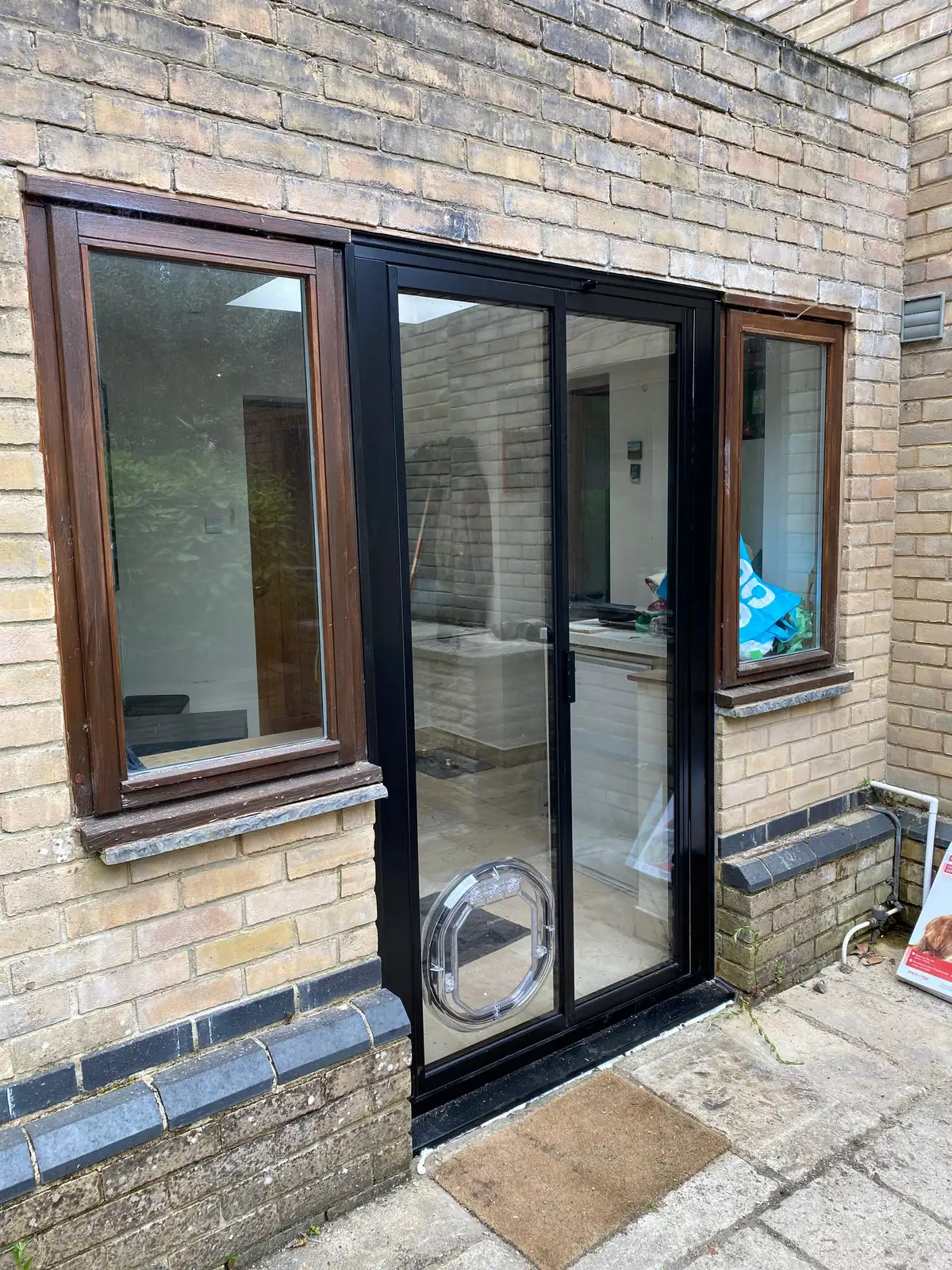
French Door Benefits
One of the main advantages of French doors is their ability to create a wide opening when both doors are swung open. This feature makes them an excellent sliding door alternative, particularly for those who want to improve the connection between indoor and outdoor spaces. During warmer months, fully opened French doors can create a welcoming entrance to a garden or patio.
French doors excel at letting natural light flood into a room. The large glass panels allow sunlight to penetrate deep into interior spaces, potentially reducing the need for artificial lighting during daylight hours. This influx of natural light can make rooms feel larger and more inviting.
They can be customised to fit various openings, including narrow spaces where sliding doors might not be practical. Narrow French doors can be an elegant solution for smaller apertures, maintaining the classic look while adapting to spatial constraints.
French doors also offer good ventilation options. Unlike sliding doors where only half the opening can be utilised for airflow, French doors allow you to open one or both doors as needed. This flexibility can help improve air circulation in your home, particularly useful during warmer weather.
For those concerned about energy efficiency, modern French doors often come with double or triple glazing options. These features can help to reduce heat loss in winter and keep interiors cooler in summer, potentially contributing to lower energy bills.
French Door Limitations
While French doors offer many benefits, they do have some limitations to keep in mind. Unlike sliding doors, French doors require clearance space to open fully. This means you’ll need to factor in the swing arc when planning furniture placement or deciding on their location.
The meeting point between the two doors can sometimes be vulnerable to draughts or water ingress during severe weather conditions. However, high-quality modern French doors often come with improved sealing systems to mitigate these issues.
In terms of accessibility, French doors may present challenges for those with mobility issues. The threshold between indoor and outdoor spaces is typically more pronounced than with sliding doors, which could be a trip hazard or difficult to navigate with a wheelchair or walker.
Pocket Doors
Pocket doors offer a unique solution among the sliding door alternatives in this article, combining space-saving design with sleek aesthetics. These innovative doors slide into a concealed pocket within the wall, disappearing completely when fully open.
How Pocket Doors Function
Instead of sliding along an exposed track like traditional sliding doors, pocket doors glide into a hidden compartment built into the adjacent wall. This design allows the door to vanish entirely when opened, freeing up valuable floor space and creating an unobstructed passageway.
Typically, pocket doors are suspended from a track mounted at the top of the door frame. Rollers attached to the top of the door enable smooth movement along this track. Some designs may also include a discreet bottom guide to ensure stable operation, though many modern pocket doors function well without this feature.
Installing pocket doors requires careful planning and construction. The wall that houses the door must be specially built or modified to accommodate the pocket. This often involves creating a cavity twice the width of the door itself, allowing it to slide fully into the wall when opened.
Advantages of Pocket Doors
Unlike hinged doors that require clearance to swing open, or even traditional sliding doors that overlap when opened, pocket doors take up no floor space at all when fully retracted. This makes them an excellent choice for tight spaces or areas where you want to optimise every square inch.
Pocket doors can be particularly effective in creating plenty of flexibility in room layout. When closed, they provide privacy and separation between spaces. When open, they allow for an open-plan feel, effectively turning two rooms into one larger area. This adaptability can be especially useful in smaller homes or apartments where space is at a premium.
For those interested in sliding door alternatives for creating a glass wall effect, pocket doors can be an intriguing option. Glass pocket doors can slide away to reveal an open space, then close to create a transparent barrier, allowing light to flow between rooms even when privacy is needed.
Pocket Door Drawbacks
The installation process can be more complex and costly than that of traditional doors, particularly if you’re retrofitting them into an existing space. The wall that houses the pocket needs to be free of electrical wiring, plumbing, and other obstacles, which can complicate installation in some cases. Maintenance can also be more challenging with pocket doors. Because the sliding mechanism is hidden within the wall, accessing it for repairs or adjustments can be difficult. Over time, tracks may collect dust or debris, potentially affecting the door’s smooth operation.
Soundproofing can be another issue with pocket doors. Because they slide into the wall rather than closing against a fixed frame, they may not create as tight a seal as traditional hinged doors. This could lead to reduced sound insulation between rooms.
Frequently Asked Questions
Are French doors a good alternative to sliding patio doors?
French doors can be an excellent alternative to sliding patio doors. They offer a classic aesthetic and typically provide a wider opening when both doors are fully extended. French doors also allow for better ventilation options, as you can open one or both doors as needed.
How do bifold doors compare to sliding doors?
Bi-fold doors offer several advantages over sliding glass patio doors. They can open up a space more fully, allowing for a wider entrance when fully folded back. Bifold doors also tend to let in more light and provide better views when closed, thanks to their narrower frames.
How do French doors compare to sliding doors in terms of security?
French doors often feature multi-point locking systems, which can make them more secure than some sliding door models. However, the security of any door largely depends on its specific design, quality of installation, and the locking mechanism used. It’s important to choose high-quality doors and ensure they’re properly installed for optimal security. Look for PAS 24 certification when shopping for doors too.
Can slide and turn doors be installed on a balcony?
Slide and turn doors can be an excellent sliding door alternative for balconies, especially in apartments or homes with limited space. They offer flexibility in opening configurations. However, it’s important to think about factors such as weatherproofing and wind resistance when installing these doors on balconies.
Can slide and turn doors be used as internal room dividers?
Slide and turn doors can be highly effective as internal room dividers. These sliding door alternatives offer the flexibility to open up spaces completely or create separate rooms as needed. These doors are particularly useful in open-plan living areas where you might want the option to create more intimate spaces occasionally.
What are the most popular alternatives to sliding patio doors in the UK?
In the UK, popular sliding patio door alternatives include bifold doors, French doors, and slide and turn doors. Each option offers unique benefits, with bifold doors being favoured for their ability to open up large spaces, French doors for their classic appeal, and slide and turn doors for their flexibility and space-saving design.
What are the best sliding doors alternatives for coastal properties?
For coastal properties, alternatives to sliding doors that offer excellent weatherproofing and corrosion resistance are ideal. Aluminium bifold or slide and turn doors are often recommended due to their durability and low maintenance requirements. These doors can withstand salt air and high winds while providing expansive views of the coast.
What are the best sliding door alternatives for period properties?
Crittall style bifold or slide and turn doors can be an excellent choice for period properties, offering a traditional aesthetic that complements older architectural styles. French doors are another popular option, as they can be designed to match the character of period homes. Both these options can provide a authentic look while offering modern performance benefits.
What are the best alternative to sliding doors for noise reduction?
Several sliding door alternatives offer good noise reduction properties; French doors with double or triple glazing can provide excellent sound insulation. Bifold doors with high-quality seals and multi-point locking systems can also be effective at reducing noise transmission. The key is to choose types of doors with thick glass and robust frame materials for optimal noise reduction.
We’d Love to Help You
Vision Glass Doors is a designer, manufacturer, and installer of premium door systems. We are a family run business with over 20 years’ experience and 5,000 installations across the UK.
Our leading range of door systems include Ultra Slim – Slide and Turn Doors, Slimline Sliding Patio Doors and Frameless Glass Doors. Suitable for various internal and external applications, they are applicable to residential and commercial projects.
Click Quick Quote Online for a free quotation within 24 hours. Alternatively, call or email us on 01582 492730 or at info@visionglassdoors.co.uk.

